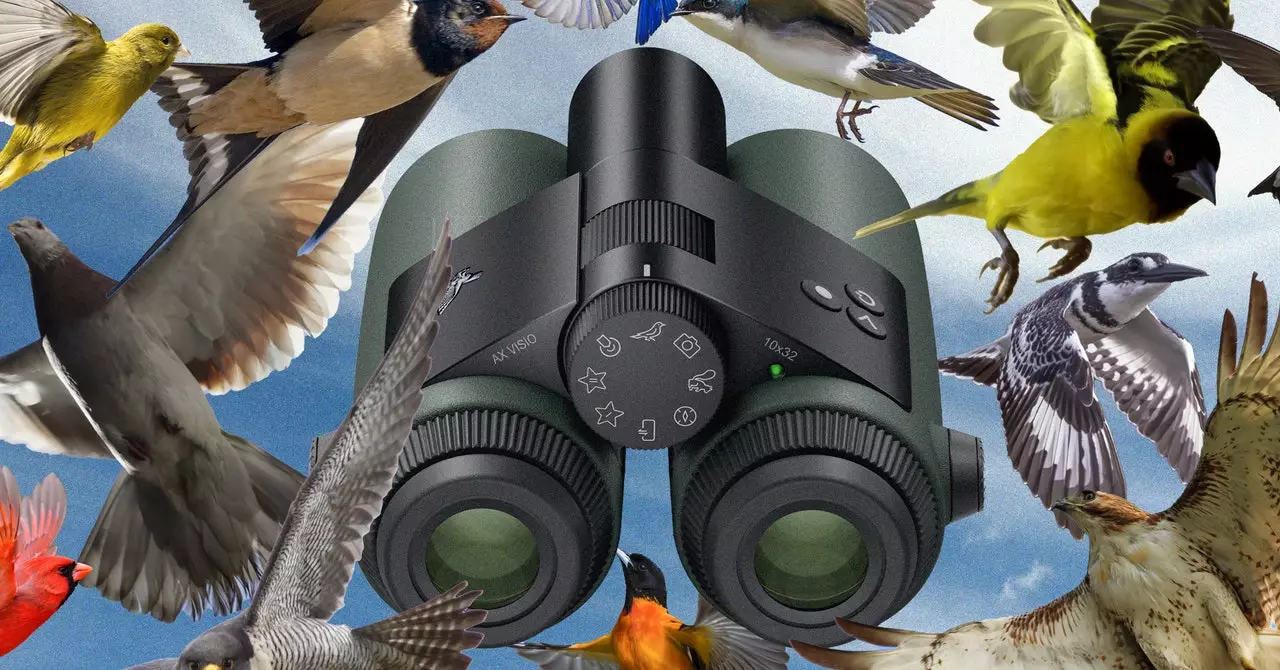In a world where technology continuously shapes our interactions with nature, the AX Visio binoculars stand out as a remarkable innovation for wildlife enthusiasts. Merging advanced imaging technology with powerful databases such as the Cornell Lab of Ornithology’s Merlin Bird ID and the Sunbird database, these binoculars provide bird watchers and nature lovers with an unprecedented tool for identification. Unlike conventional binoculars, the AX Visio uses image recognition and GPS capabilities to enhance the user’s experience, making wildlife identification easier and more accurate.
The AX Visio binoculars are particularly adept at bird identification, thanks to their integration of a modified version of the Merlin Bird ID database. While their Mammals ID, Butterfly ID, and Dragonfly ID features draw from the Sunbird database, it’s crucial to note that the identification capabilities for mammals and flying insects are currently limited to North America and Europe. In contrast, the bird identification functionality allows for observations in diverse geographical locales—including the often-overlooked wilderness of Antarctica.
This multifaceted identification system relies not only on visual input but also on geolocation data facilitated by a built-in GPS sensor. This technological amalgamation enables bird watchers to contextualize their observations geographically, enhancing accuracy by reducing the potential for misidentifications. Such a feature is especially vital for amateur birdwatchers who may struggle with fine distinctions between similar-looking species.
During a recent immersive experience at the andBeyond Phinda Private Game Reserve in South Africa—a noteworthy destination for nature enthusiasts—I was able to put the AX Visio binoculars through their paces. Initially, the complexity of using high-tech binoculars felt intimidating. However, the design is intuitive; a simple mode-selection wheel located on the bridge allows quick transitions between various identification systems. This design choice is critical, as it alleviates anxiety around mastering complicated technology.
The binoculars also feature a straightforward photography mode, allowing users to capture breathtaking moments while observing wildlife. The experience of rotating through settings was seamless, making it accessible even for those less familiar with modern technology.
Achieving successful identification requires steadiness and precise focus. The AX Visio binoculars assist this process by providing a red circle in the field of vision; as long as the observed animal occupies most of this circle, the likelihood of identification increases significantly. By pressing a single button, users can receive real-time identification feedback. This responsive interaction is especially beneficial for capturing fleeting moments in the field.
Though the AX Visio demonstrated impressive capabilities, no technology is without its limitations. In my experience, while the binoculars accurately identified smaller birds, such as the malachite kingfisher from a distance of 30 meters, they sometimes encountered challenges. For instance, while attempting to identify a bee-eater 100 meters away, the device failed to deliver the expected results. Additionally, there were instances where the binoculars could not identify birds that were clearly visible within the red circle. Such errors may lead to user frustration, especially when anticipation builds around catching a glimpse of elusive species.
Aside from their innovative technology, the AX Visio binoculars serve a greater purpose through their integration into the conservation initiatives at the Phinda Private Game Reserve. With daily rental fees funneling funds into local conservation projects, guests have the dual opportunity of experiencing cutting-edge technology while supporting crucial ecological endeavors.
The AX Visio binoculars represent a significant advance in the realm of wildlife observation equipment. By combining user-friendly technology with powerful databases, these binoculars not only facilitate a deeper connection between nature enthusiasts and the wildlife they observe but also contribute to broader conservation efforts. However, as with any technological advancement, a careful balance must be struck between innovation and reliability to ensure a fulfilling experience for users.

